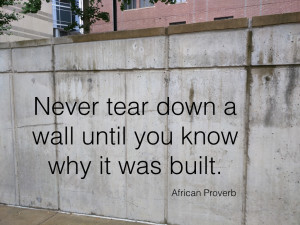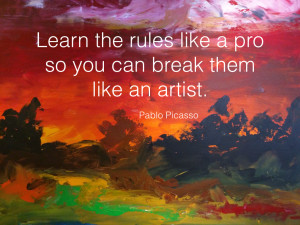Teachers love to establish protocols at the beginning of the year and in general it is a good practice. We need structure in schools but I feel like there is often an overemphasis on rules that is based on administrators trying to control teachers or teachers trying to control students (same exact phenomenon really).
I have spoken out against standardization and structure at times, but it has a time and place. For example when I drive my car I am very happy that we have rules about driving: which side of the road, how to signal and make turns, and slow drivers in the left lane!!!!! Without these protocols I would probably be dead. Protocols around safety make sense and are imperative. In the classroom we need protocols to establish safety for our students and this is especially important for their emotional safety.
The counter example is a chef. There are protocols for proper cooking techniques. There is a science to how to prepare food properly so that it is safe and delicious. My wife and I often watch Chopped. The format of the show is that it is a competition where contestants are given 4-5 mystery ingredients that they need to turn into appetizers, main courses, and desserts. The chefs on the show never make the same dishes because cooking is also an art. If they do the science wrong, then the dish can be a disaster. But if they do the science right, but don’t personalize it into a unique dish then the food can be bland and boring.
Teaching is like being a chef. It is an art and a science. There is a science and a structure behind good teaching (PBL is my favorite structure :). I do not believe that teachers should just show up and “wing it” everyday. On the other hand, if we truly believe in student voice and choice then we need to have some flexibility in our classrooms. Protocols and rules need to be able to change and adapt to the students’ needs in our rooms. If you haven’t started school yet, then you have no relationships to build protocols on. Too much structure and protocols can stifle creativity and learning.
I love comparing the African proverb with the Picasso quote at the top. Breaking protocols for no purpose makes no sense. But when you really understand what you are trying to accomplish then you will start to recognize when protocols are getting in the way. My thermometer is to ask myself if the protocol limits student learning through voice and choice. If yes, then I need to consider other ways to structure learning.
Final thought: build protocols with your staff or students. Don’t force structure on them!


